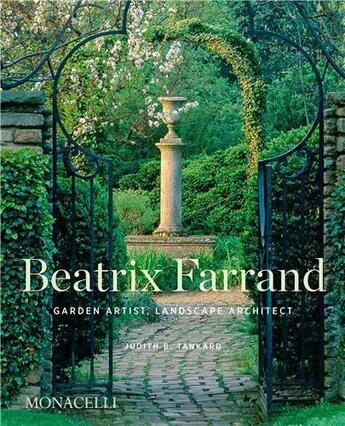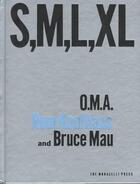Résumé:
A long-awaited updated edition of the 2009 definitive monograph, Beatrix Farrand: Garden Artist, Landscape Architect chronicles the life and work of one of the most important figures in American landscape architecture.
Beatrix Farrand, the only female founder of the American Society of... Voir plus
A long-awaited updated edition of the 2009 definitive monograph, Beatrix Farrand: Garden Artist, Landscape Architect chronicles the life and work of one of the most important figures in American landscape architecture.
Beatrix Farrand, the only female founder of the American Society of Landscape Architects, is one of the most important landscape architects of the early twentieth century. Today the scope of her work and her influence on the profession are widely acknowledged, and her gardens are being studied, restored, and opened to the public.
Born into a prominent New York family (she was Edith Wharton's niece), Farrand designed lavish gardens for the leaders of society, including the Harknesses, the Rockefellers, and the Blisses. Ultimately, her portfolio extended to college and university campuses, including Princeton, Yale, and the University of Chicago, and public gardens, the Santa Barbara Botanic Garden and the Rose Garden at the New York Botanical Garden among them. Her best-known design is the landscape at Dumbarton Oaks in Washington, D.C., originally a private residence with extensive grounds and now a research center for Harvard University surrounded by a naturalistic park restored and maintained by the National Park Service. Deeply influenced by the English garden designer Gertrude Jekyll, Farrand was known for broad expanses of lawn with deep swaths of borders planted in a subtle palette of foliage and flowers. In her public work, she adapted this design strategy to create paths and plantings that define the character of the space and the hecirculation through it.
Heavily illustrated with archival images and photographs of her gardens at their peak-many taken especially for this book, Beatrix Farrand: Garden Artist, Landscape Architect also displays beautiful watercolor wash renderings of her designs, now preserved at College of Environmental Design of the University of California at Berkeley. The new edition includes updated images that reflect the current state of gardens including the Peggy Rockefeller Rose Garden at the New York Botanical Garden, the International House Courtyard at the University of Chicago, Garland Farm (Farrand's last home and garden, which has recently been restored), Dumbarton Oaks, Dumbarton Oaks Park (which was not included in the first edition), among others.
The book concludes with a comprehensive list of Farrand's commissions and the gardens open to the public, providing direction for further study and exploration. It also features a new preface outlining the milestones in research since the first edition's publication, updated details about ownership and renovations of many properties, and a revised bibliography including articles and books published over the past ten years.
Published to coincide with the 150th anniversary of Farrand's birth and written by landscape historian and preservation consultant Judith B. Tankard, Beatrix Farrand: Garden Artist, Landscape Architect takes readers on a tour of Farrand's finest works, celebrating her influence on succeeding generations of women landscape architects.









